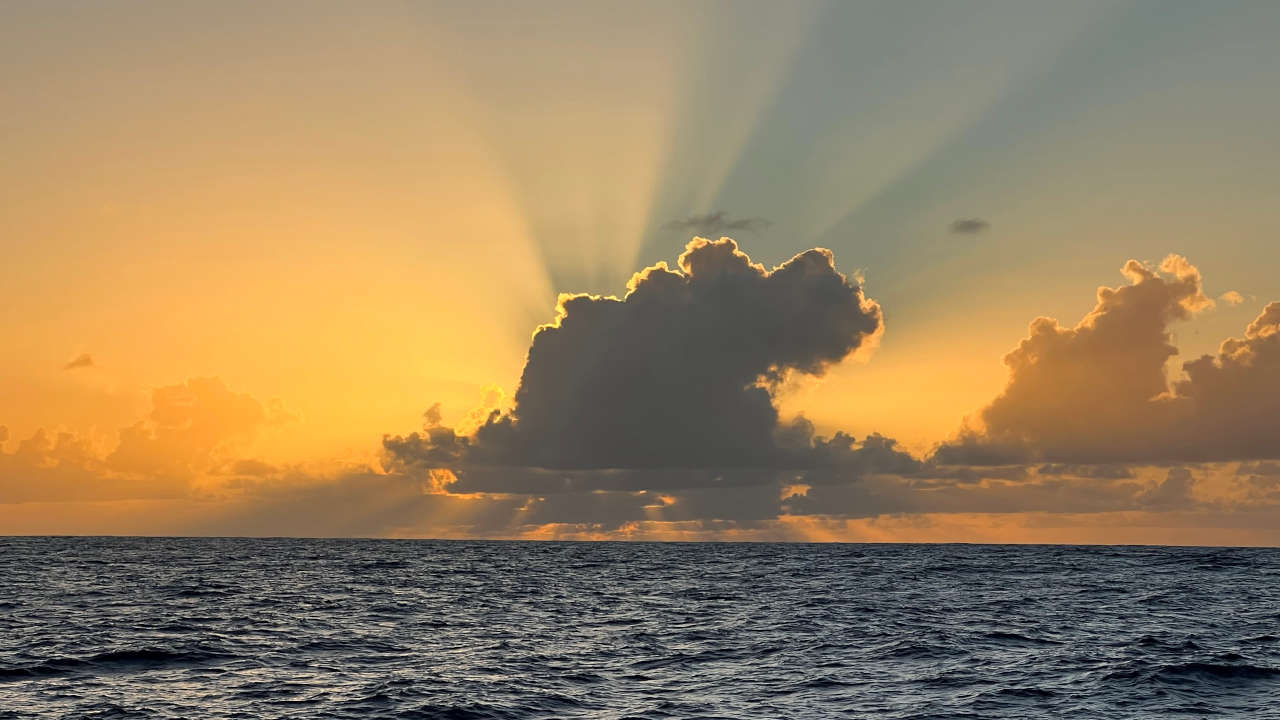Part 2 - The Atlantic Voyage
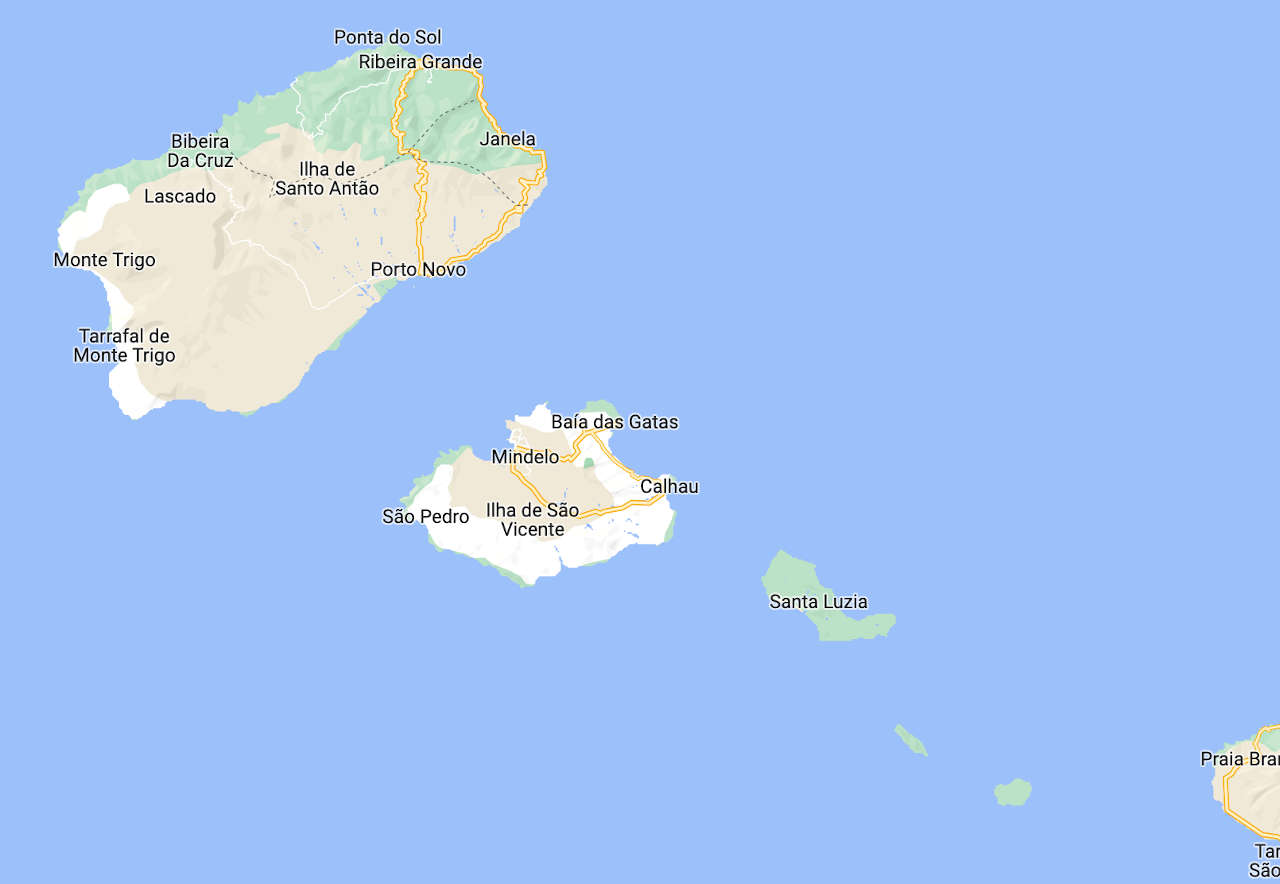
From Midelo we sailed round the west side of Sao Vincente to Sao Pedro, rounding the lighthouse mounted on the steep cliff face. We anchored off the beach where again there was a lot of wind and breakers made landing difficult. Here, for the first time, we got into the clean, but still fairly cool water to give the bottom a good scrub.
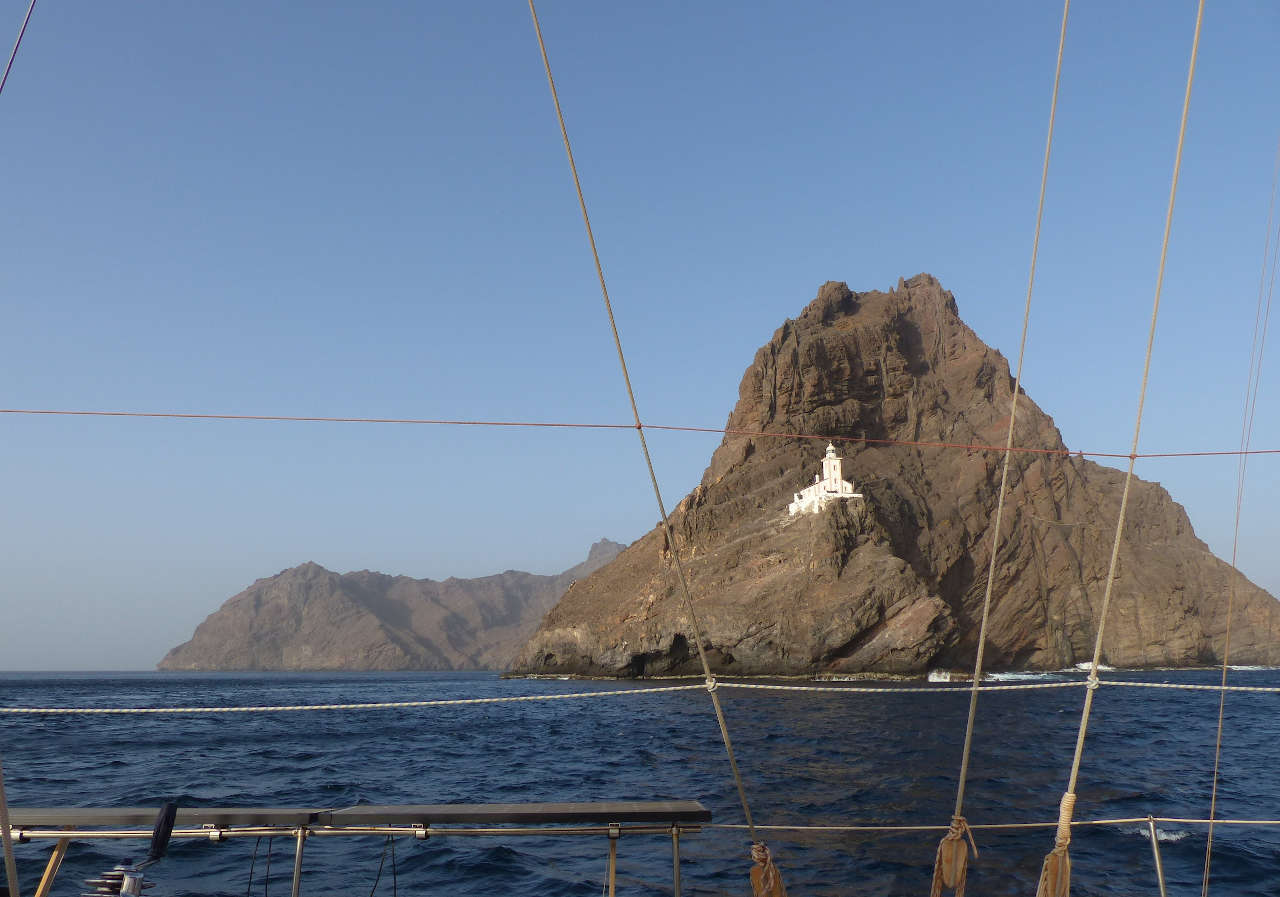
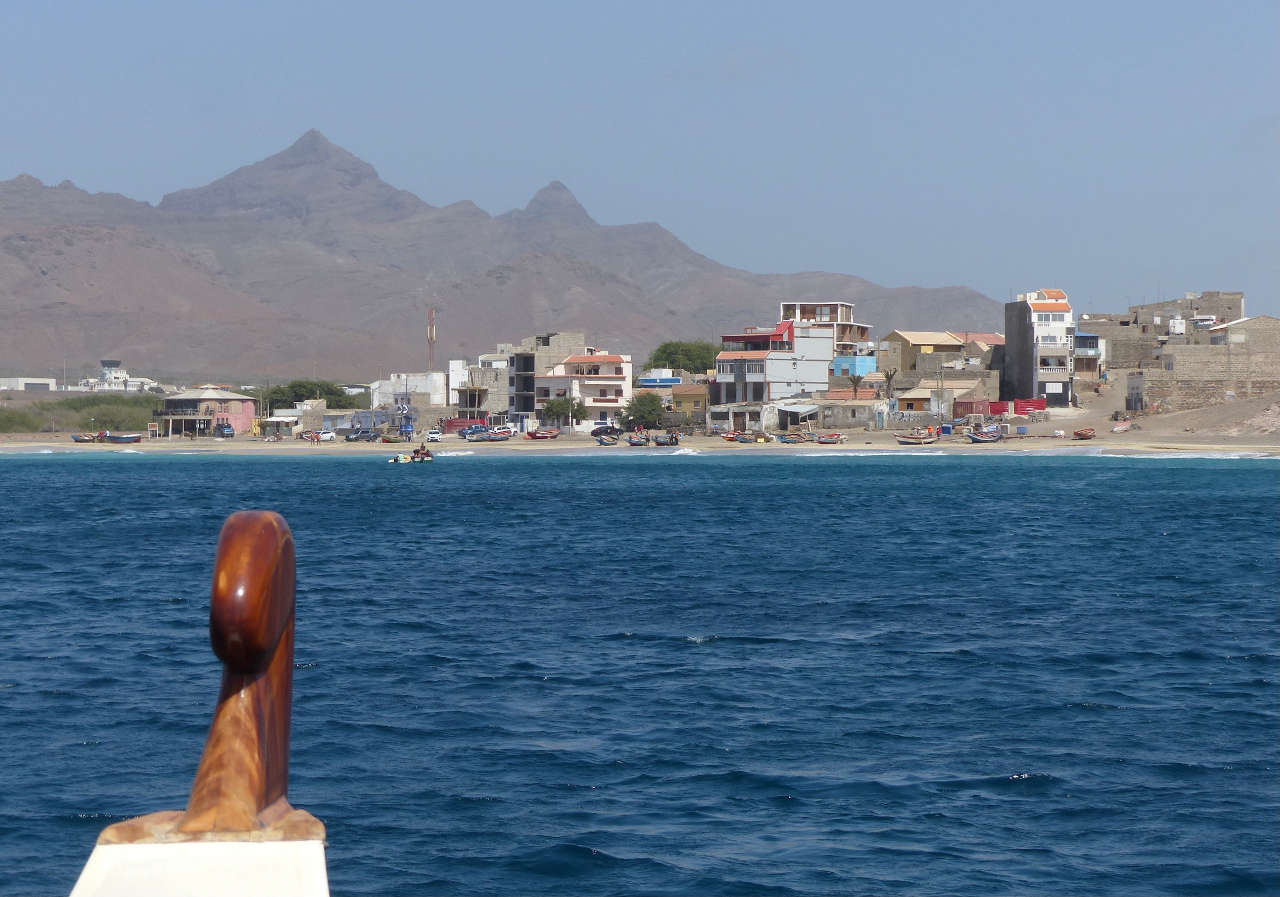
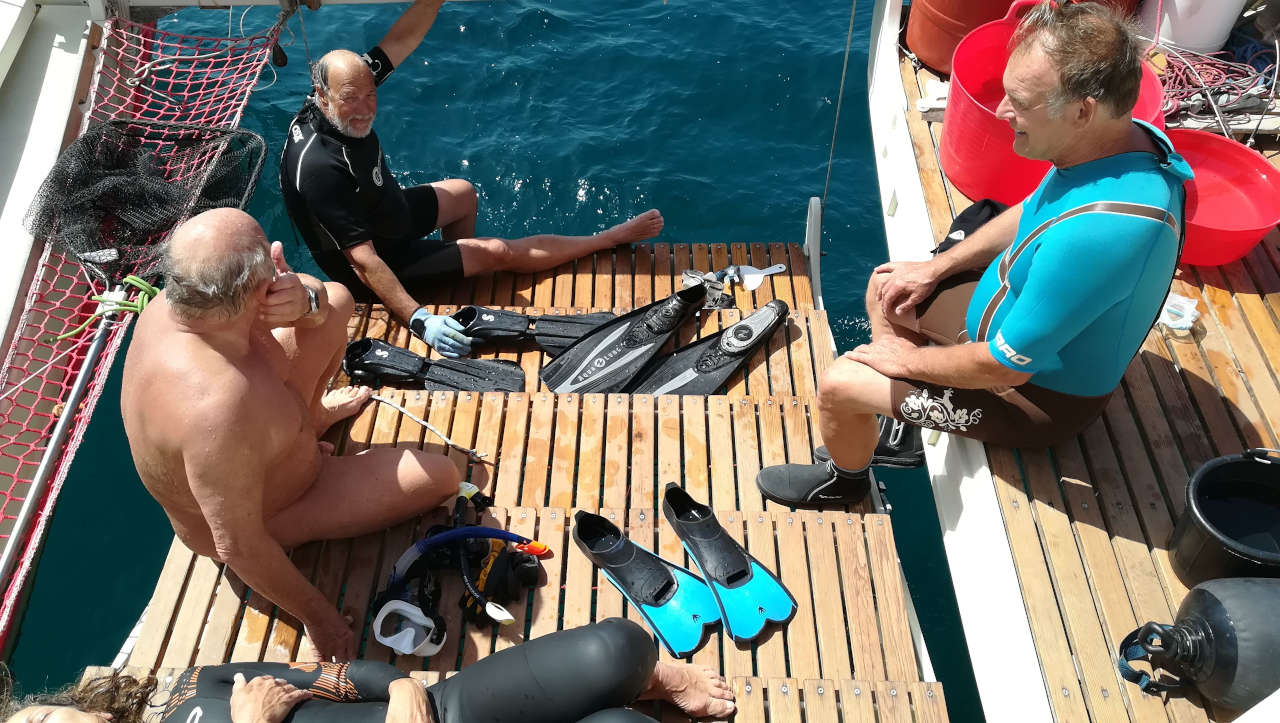
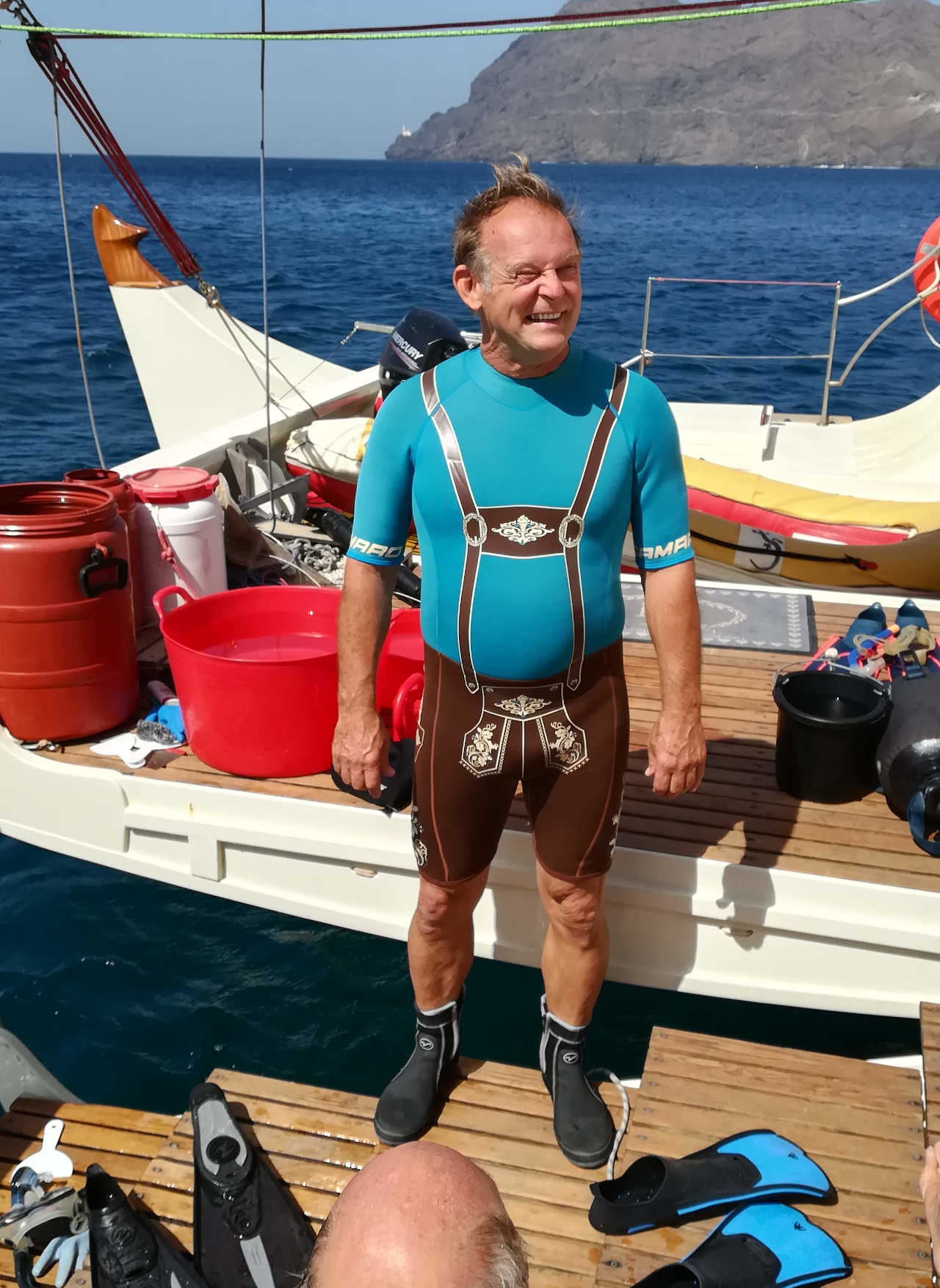
We set sail for Guadeloupe on 7th February. On the 11th February I wrote this in the Largyalo newsletter:
"A change in the weather. After two days of mainly clouded skies the expected stronger wind has arrived. This afternoon it is blowing about 21 knots and we are sailing at around 7 knots under Staysail and 2 reefs in the mainsail, with 3rd reef taken just now.
"These last 48 hours have given us some excitement and work. Yesterday afternoon the autopilot alarm sounded, the hydraulic steering had stopped working, the boat started to turn into the wind!!!
In Lanzarote Berti had got the crew to install emergency tillers. A couple of years before they had a leak in the steering hydraulics and steering failure, so some real tillers above decks with which we could hand steer would be a good idea. The installed tillers, connected to each other with two wires, were of stainless steel tube, but were not very long, so we did have some concerns how well we would be able to steer with them. Now was the time to test them out.
"With full sail the force on the tillers was hard, the thin wooden extension immediately broke, a large clamp with sturdy steel bar was inserted into the other tiller and with some difficulty we were able to steer with this. Sail was reduced and another tiller extension made out of more tube, but the joint to the actual tiller was weak. I steered with this for some time until Berti topped up the hydraulic system and steering was re-established. But we were losing oil all the time. There was a leak somewhere!
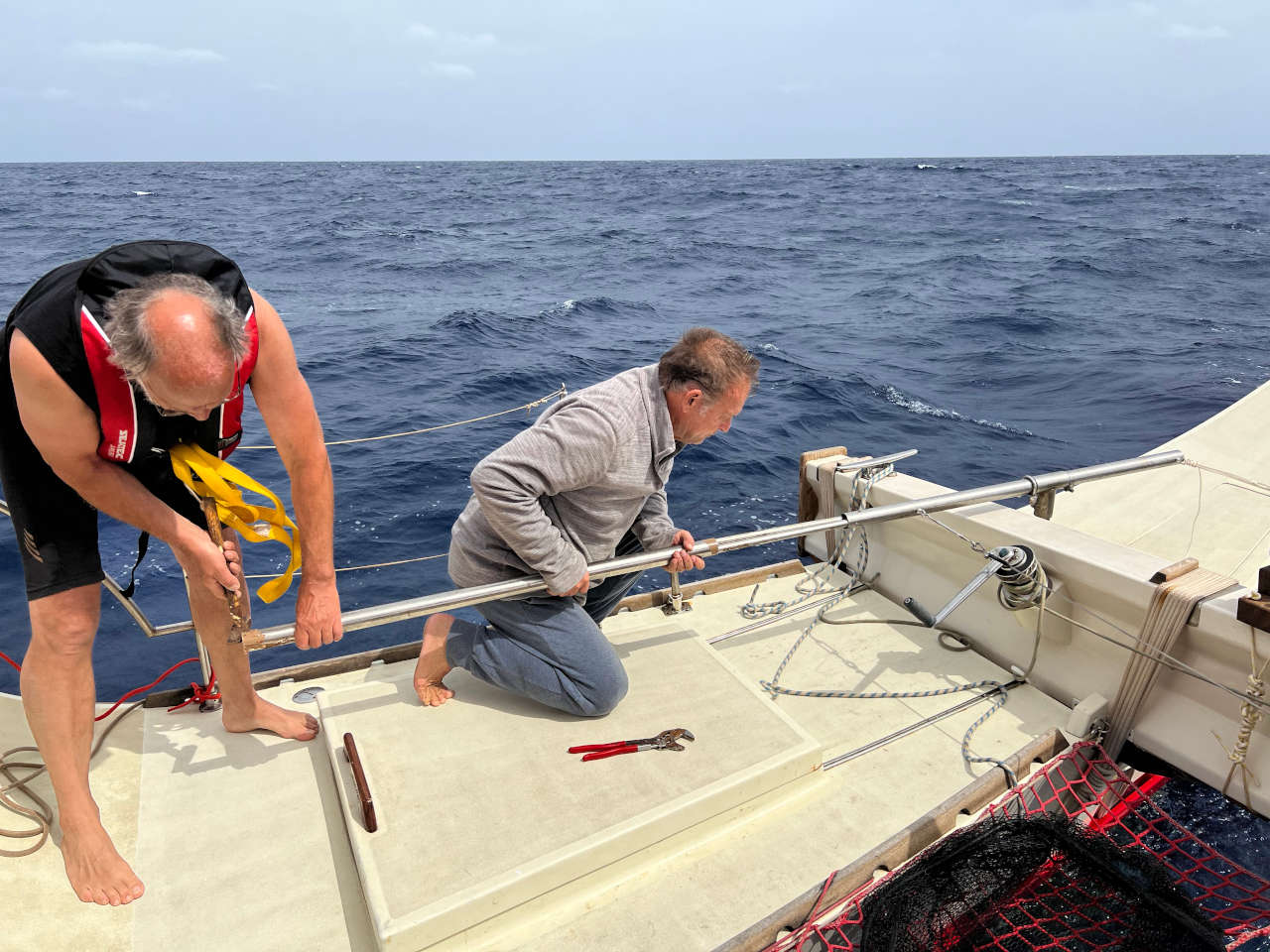
"An hour later Manfred announced he had found the leak. In the corner under the aft walkway the hydraulic tube lay close to another fitting and a screw head had chafed into the tube. A small leak, in an awkward place, how to effect repairs? A piece of larger diameter hydraulic tube was cut and split lengthwise, it was then wrapped round the leak and clamped tight with a row of jubilee clips to withstand the very high pressure. It seemed to have worked. But through the night we were still losing oil, so a better solution had to be found the next morning.
"Fortunately spares were on board, sufficient hydraulic tube to replace the leaking section and sufficient oil. All the joints were of such design they could be undone and reused. A new route was found for the tube and all preparations made before disabling and draining the system. I was appointed steers person during the operation. We had already made reinforcements to the extended tiller and all seemed to be going well. I could sit by the aft hatch with the hand-bearing compass in front of me on the deck. A rope to the windward gunnel secured the tiller so I did not need to hold it with my own muscles, small adjustments kept the boat on course, but there was quite a strong weather-helm and slowly the tiller joint started to bend.
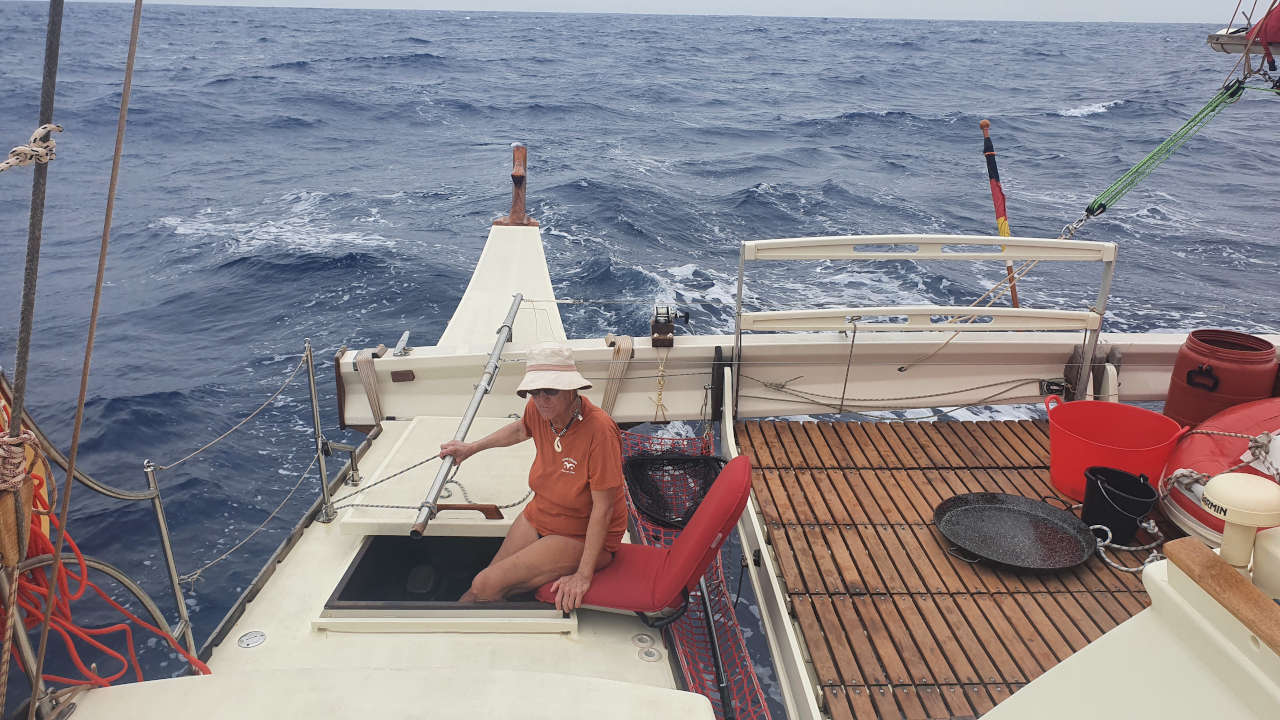
"The mainsail was taken down to ease the forces. I then got rid of the bent extension and set up a rope pulley to the end of the short tiller with the rope going to the winch of the swimming ramp, which was conveniently located on the aft beam. This worked very well. But soon the hydraulics team finished their work and the system tested. All worked well, no more oil lost, we could go back on autopilot.
"It was good that all the work was done in the morning with still a fairly light wind. As I wrote at the beginning, the stronger wind has arrived and we are stomping along, I have my feet braced under the table while the laptop rocks back and forth. Water splats up under the platform, my cabin on the leeward hull forward gets the most waves, so one must be careful opening the hatch and making a quick sprint inside. Everyone is still happy and thankful repairs were made. Still 1600 Nm to go.
"We all remembered James, Ruth and Jutta’s first voyage on little Tangaroa, weather like now would have been very hard aboard.. and they had continuous rudder troubles."
One thing I did not mention was how glad I was that we have simple, strong wooden tillers on Spirit of Gaia, connected to the steering wheel with rope wrapped round a drum behind the wheel. This rope runs through blocks to the tillers, all above deck, so one can replace it whilst at sea. Our windvane steering connects into this rope with toggles, leaving the rope slack round the wheel to prevent too much resistance. We never had a problem with this system throughout Gaia’s 30 years life, the rope only got replaced once at the end of the round the world voyage.
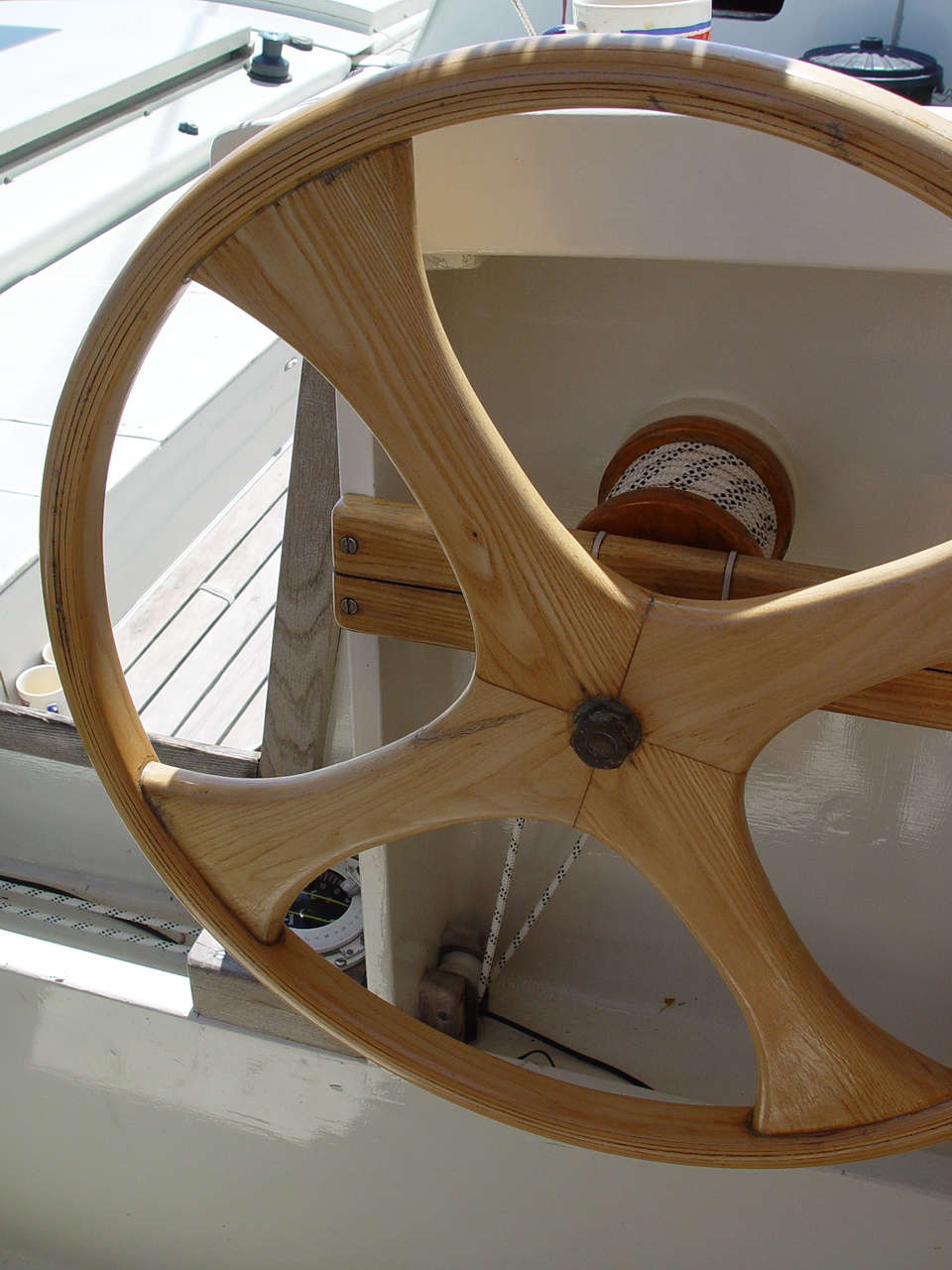
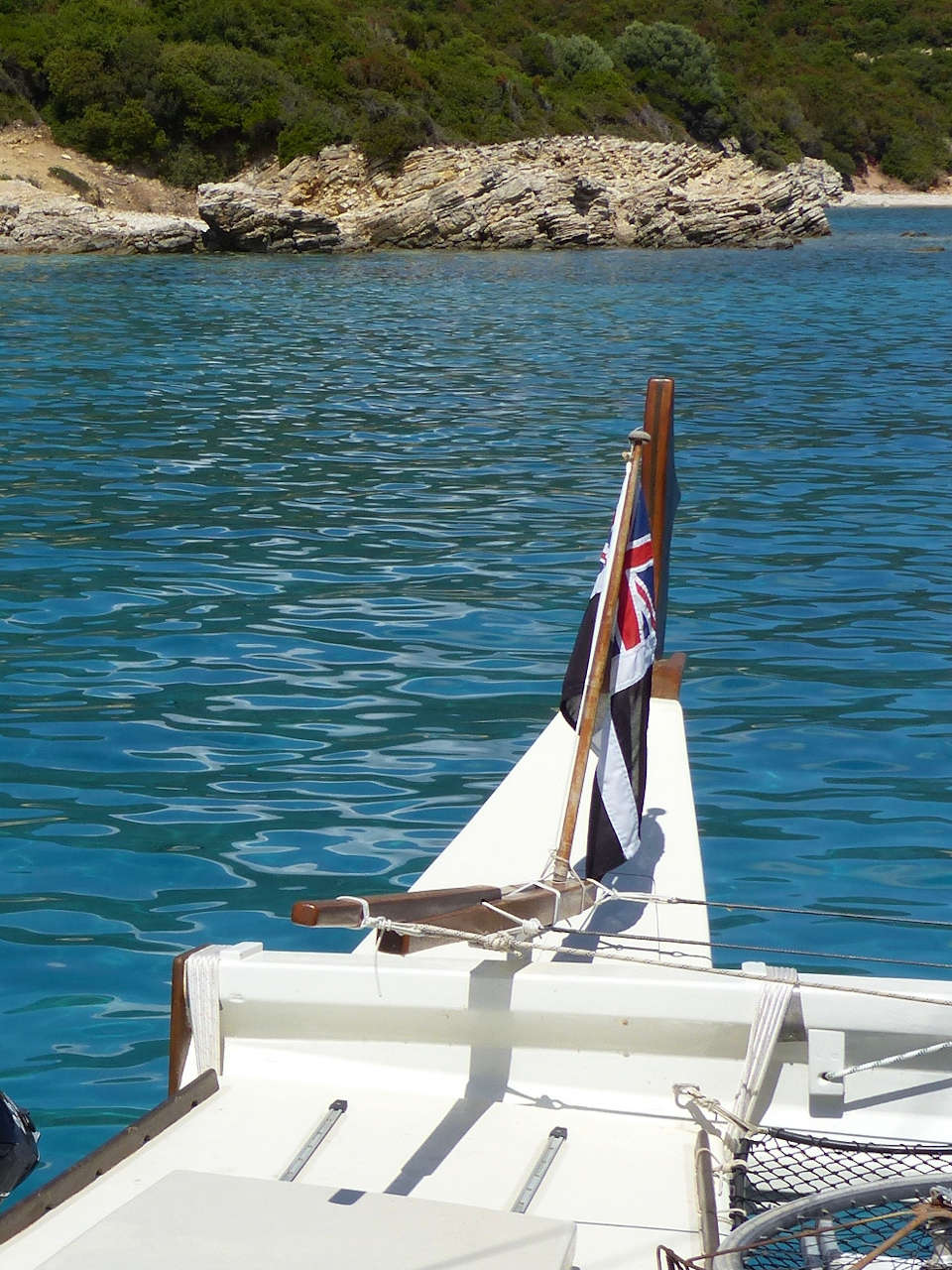
Towards the end of the voyage on the 20th February I contemplated on my time onboard:
"I’ve been aboard Largyalo now for just over 4 weeks. It has been a wonderful healing time for me. It is two months since James died, the first weeks a hectic time of shock, followed by busy organization and communication, at the end of which I was offered this wonderful opportunity to sail across the Atlantic.
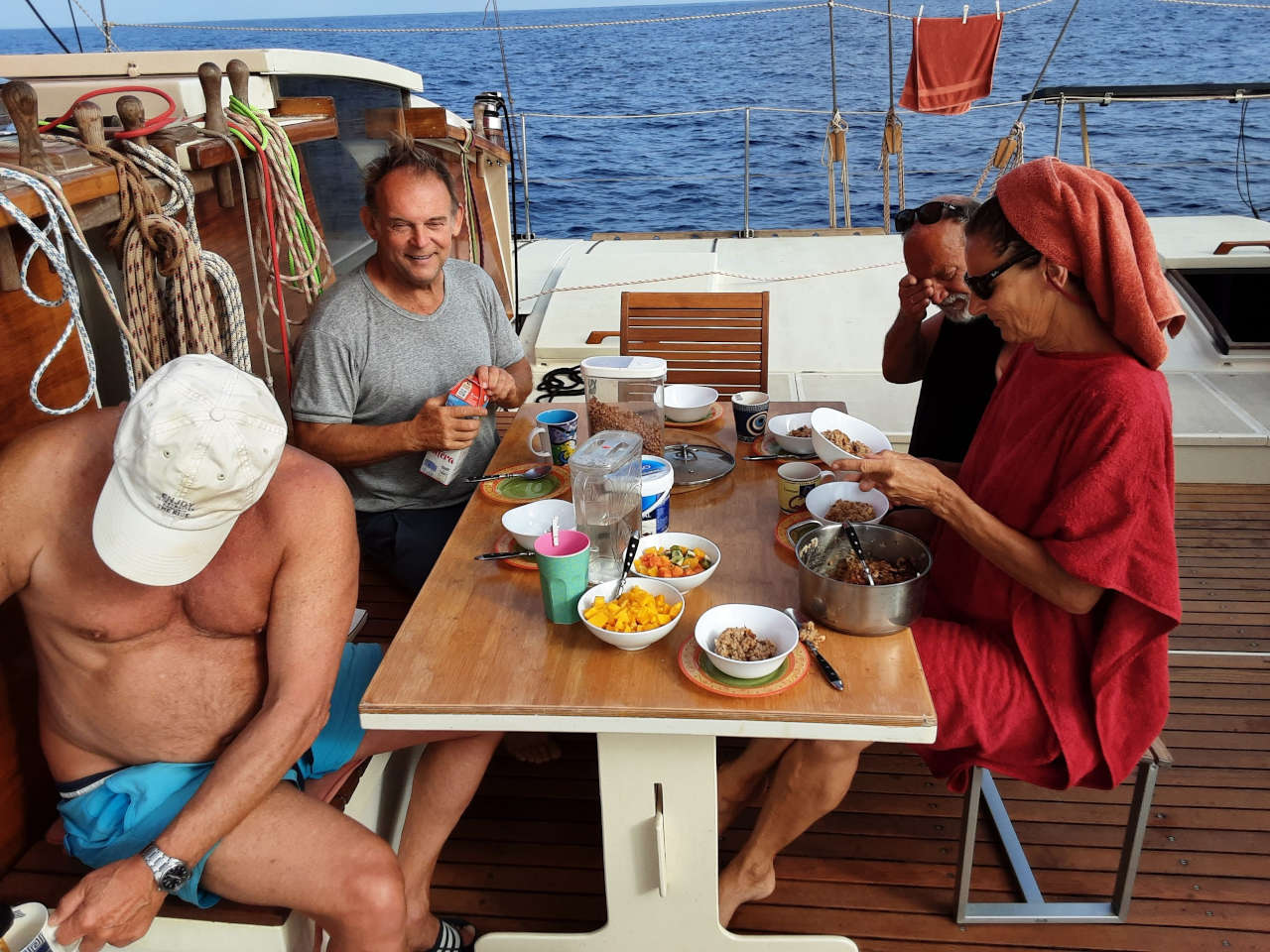
"We are now approaching Guadeloupe, should arrive there in three to four days, so long as the wind does not get too light. We still have around 430 NM to go, the voyage so far has not been the fastest, with light winds to start and then nearly a week of strong (force 6 to 7) winds and very rough seas, in which we did not want to sail too fast due to the wild motion and waves slamming into the hulls. Today the wind is light again and the seas have smoothed out.
"Sailing on someone else’s strong and well prepared boat can be very relaxing. I don’t have the responsibility of the captain, or the first mate (Berti and Petra take all this on their shoulders) and without communications from the outer world I have hours to just "sit and think", read, lie in my bunk, dream and go over past memories. Sitting on deck watching the huge waves rising astern then breaking and rolling under the hulls is mesmerizing and energizing. At other times playing a game of Trivial Pursuit (in German!), challenging one’s knowledge (I’m only any good at the science, geography and history questions). All the time learning more German, trying to understand Manfred’s rude jokes and stories, talking in more depth in English to Petra and Wolfgang, eating lovely meals.
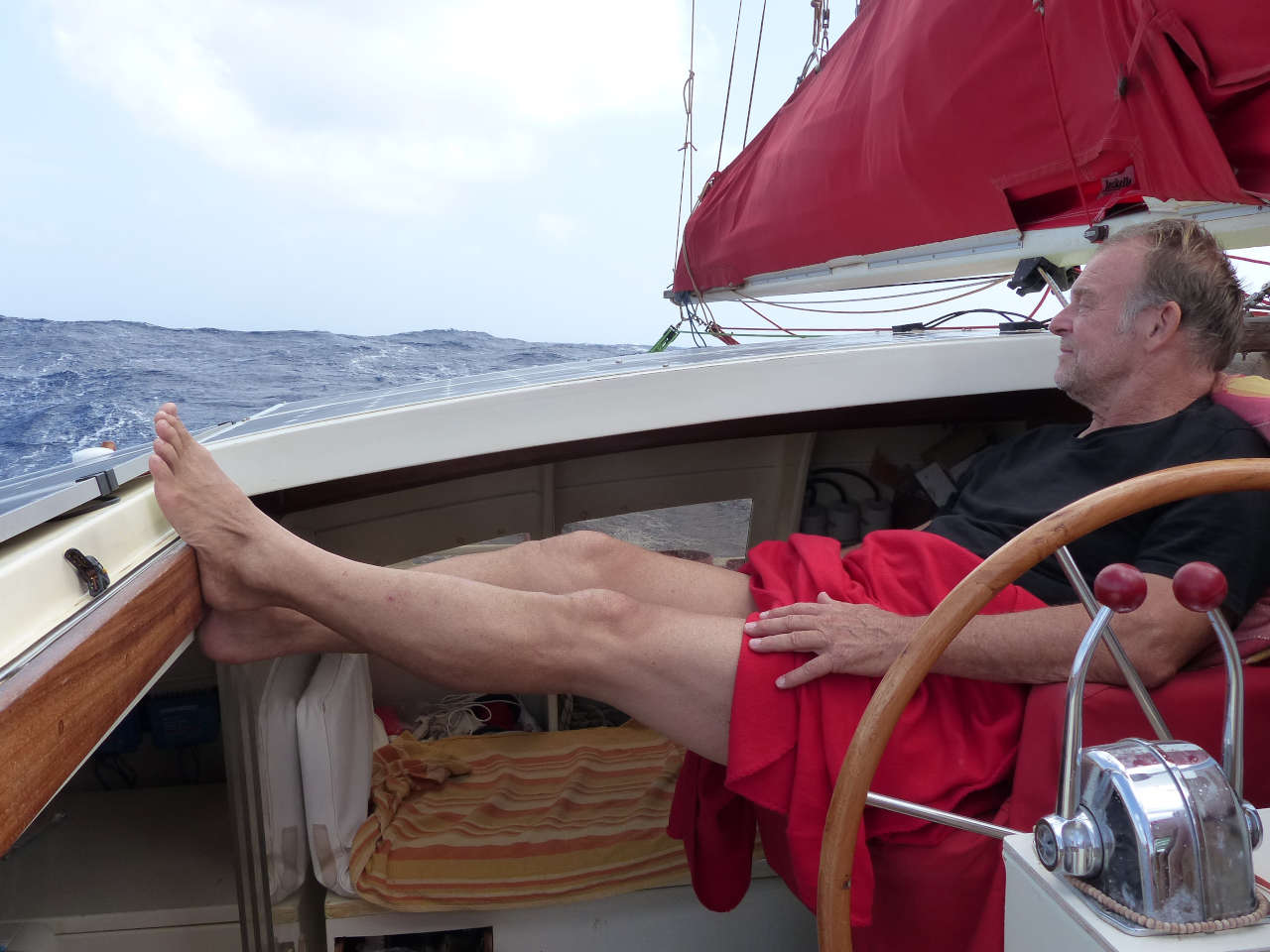
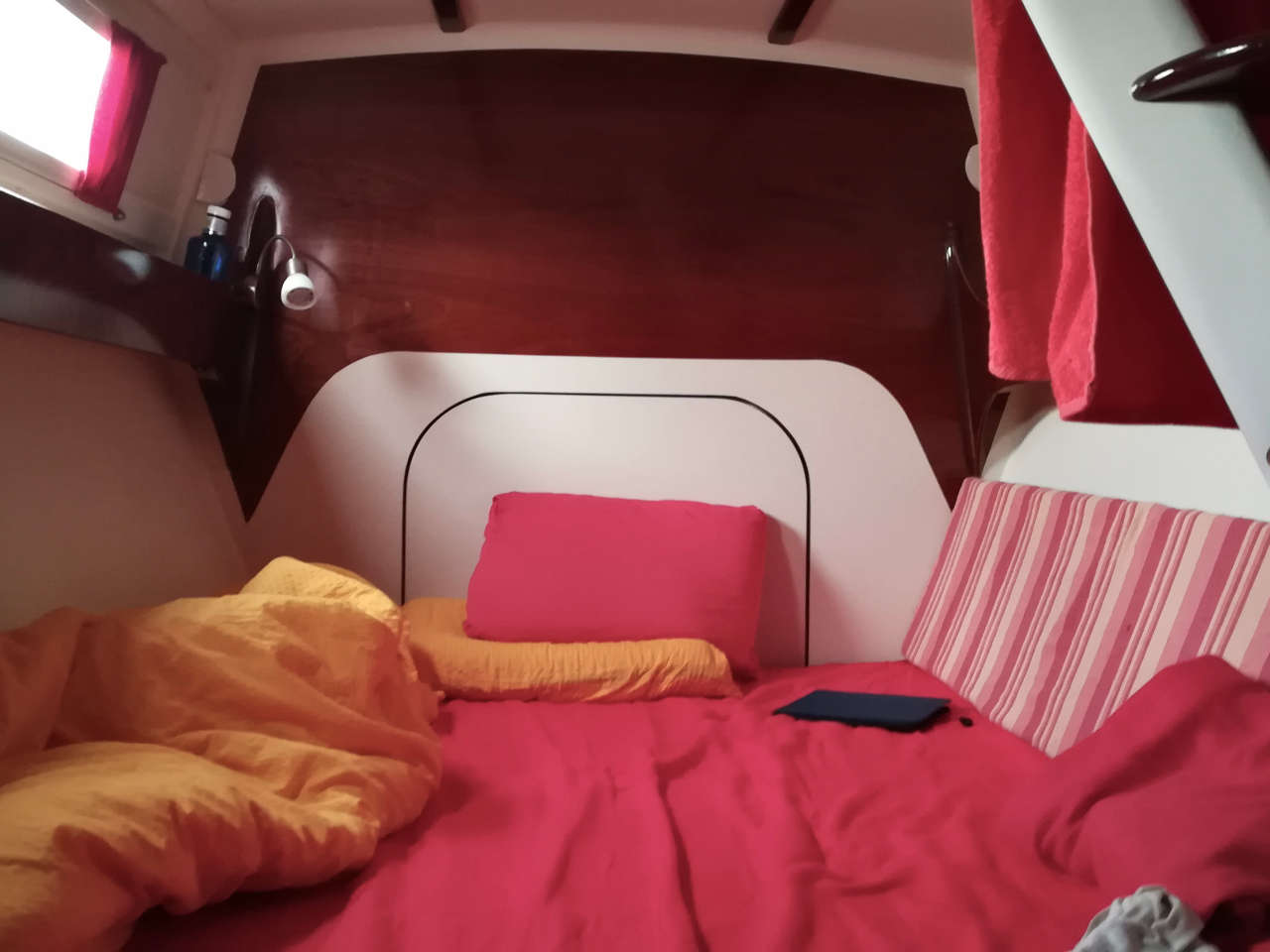
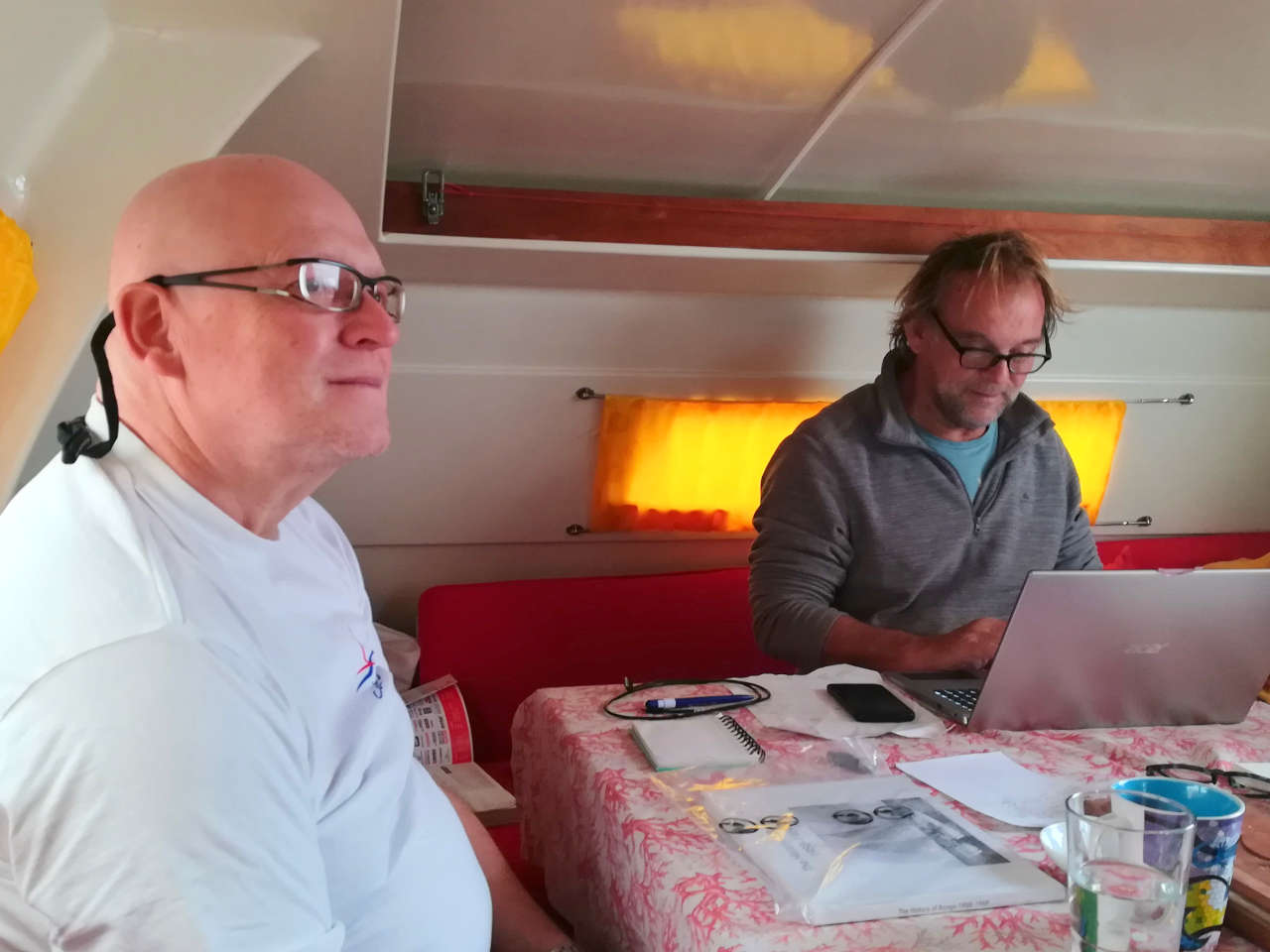
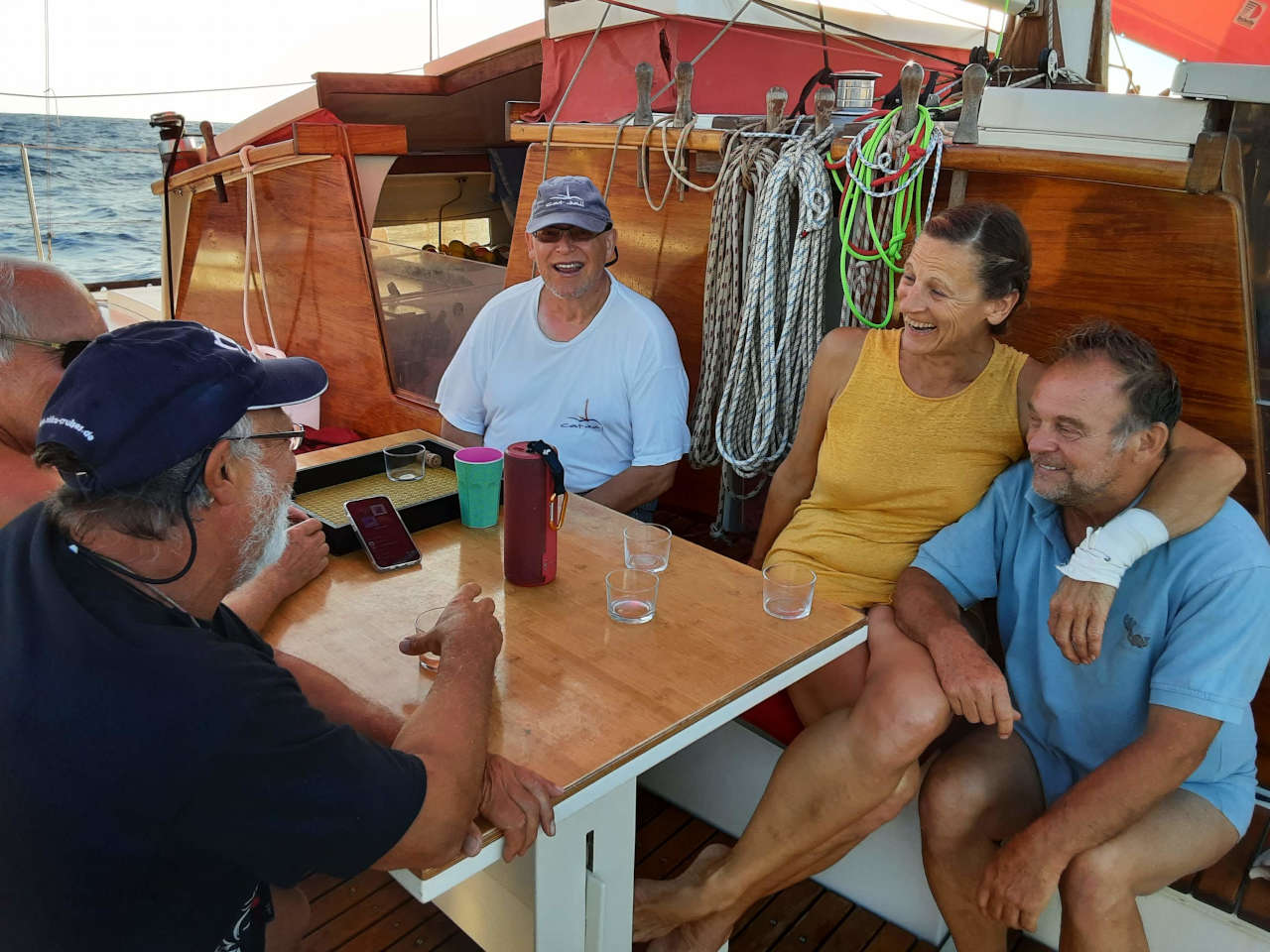
"During the night watches with a clear sky I reacquainted myself with the navigation stars I had studied on previous ocean voyages. I had not thought to bring Harold Gatty’s wonderful star chart (from his Raft Book, see ‘People of the Sea’), so had to go from memory and later checking this on Manfred’s handy phone app. Though I still prefer that great chart.
"We plan to make landfall in Les Saintes, Guadeloupe, we are looking forward to the clear tropical waters of the Caribbean and snorkelling over the coral reefs. I’m also looking forward to meeting up with other Wharram catamarans and friends. Matt and Suzanne’s Pahi 42 HECATE is sailing in the area and we hope to meet. Hans Klaar on his 70ft ethnic canoe is also bound for Guadeloupe. But there must be others, so if you are sailing out there and read this, do try to come and meet LARGYALO and her crew.
"I will have over a month to enjoy the Caribbean, then plan to be in Annapolis for the Ocean Cruising Club AGM and awards ceremony on 2nd April."
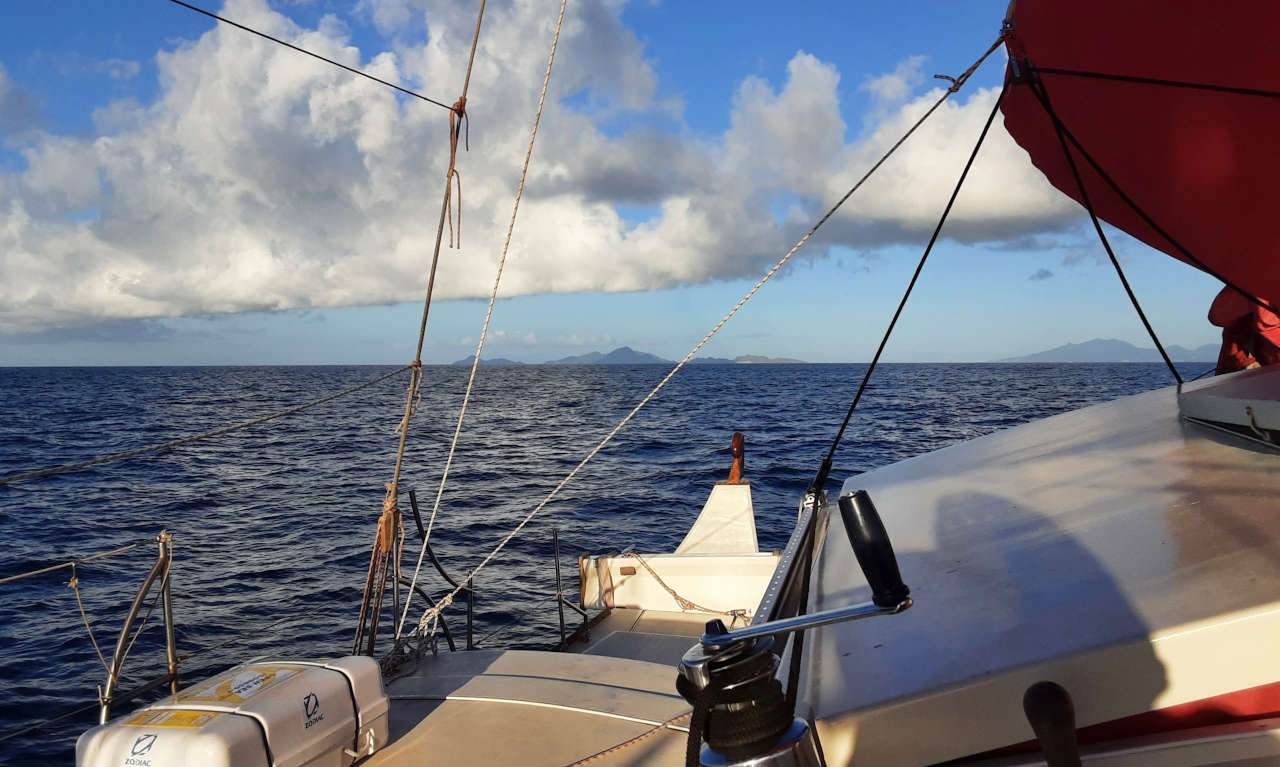
So our voyage ended in Les Saintes on Thursday 24th February, the day Russia invaded the Ukraine. Boris Johnson was still prime minister, saved by the crisis. A sudden plunge back into the horrors of normal land life. The three men left to fly back to Germany. I stayed on board for another three weeks during which we took it easy, visiting various anchorages round the coast while Petra’s mother and her partner joined us for a holiday. The wind blew really hard most of the time, so we avoided sailing large distances. Sadly I did not see any of the beautiful coral reefs I had hoped for.
